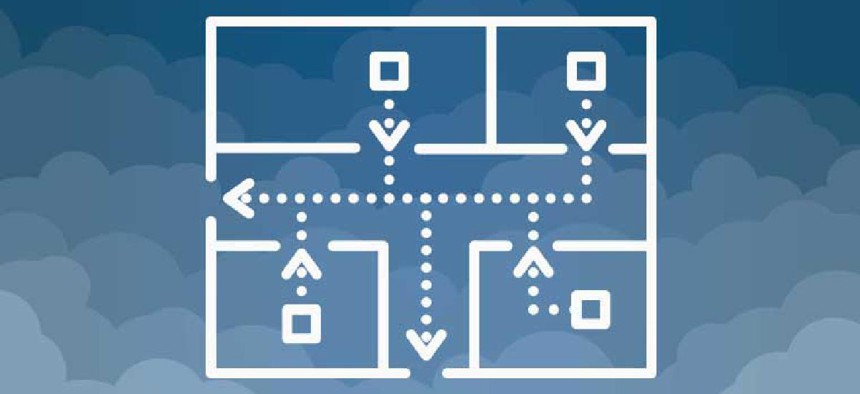What’s your cloud safety plan?

Agencies entering into an agreement with a cloud provider must develop an exit strategy before signing on the dotted line so they don’t get trapped.
As agencies become increasingly dependent on multi- and hybrid cloud environments, they need a safety plan for their cloud strategies -- something to protect them from the potentially high egress costs involved in moving applications and data from one cloud to another.
IT managers may be familiar with those costs. When the Obama administration announced the Cloud First policy in 2011, many administrators were lured by the siren song of low-cost entry barriers and no capital investments. However, they soon discovered that once their data was in a particular cloud service, it could be difficult to get it out. Over time, data gravity began to set in, and applications and data became closely tied to their particular clouds, making moving from one cloud to another time consuming and costly.
This is why creating an exit plan before entering into an agreement with a cloud provider is so important. It provides a clear path to freedom just in case it’s needed. Here’s what it looks like.
Developing an exit strategy
Agencies entering into an agreement with a cloud provider must develop an exit strategy before signing on the dotted line so they don’t get trapped.
Prior to making a commitment, they should think about how much they’re willing to spend to be successful. If the cloud platform works well, agencies will likely end up having a lot of applications, data and network traffic running in that cloud simultaneously. Low-cost entry points are one thing, but once agencies have migrated to the cloud, these costs can escalate quickly based on the amount of data and number of applications the cloud provider is being asked to host. How much is too much?
Anything above with the expected costs may require revisiting options. An agency may decide to host some of its applications on the public cloud while moving others in-house, or shift some applications from one cloud to another for better cost efficiencies. Agencies should plan these options in advance so they know where they’ll go if things become too expensive.
Having an established cost threshold gives agencies a clear set of financial expectations when they enter into an agreement. That’s the basis of an exit strategy. Agencies that can keep an eye on costs throughout the course of their engagement with their cloud provider will have a better idea of when it’s time to make a move.
Running a cloud fire drill
When it is time to make that move, it’s imperative to have easily portable applications and data. Applications should be developed with portability in mind so they can be easily lifted-and-shifted across clouds, which can mean keeping them agnostic and avoiding proprietary, cloud vendor-specific services.
Just as an agency may run the occasional fire drill to make sure that the escape system is working properly, cloud managers will want to periodically test the portability of their applications. Portability testing can indicate how easy or difficult it will be to move an application from one cloud provider to another, including the time and work it will take for the migration to be completed. Agencies should test portability of all applications before deploying them to the cloud.
An open-source substrate can greatly enhance the ability to port applications across clouds. A common data fabric that essentially overlays different cloud platforms enables agencies to move systems from one cloud provider to another. For instance, they can spin up open source databases and use the same data and schemas across those different platforms, giving them greater freedom, flexibility and vendor control.
Creating a backup plan
Having a contingency plan as part of a cloud strategy is also critical in case one's cloud provider should experience an outage.
Cloud providers that have locations in multiple regions can provide redundancy in case of an outage. If something were to happen to an East Coast data center, a cloud provider can spin up the same application instances in its West Coast centers, or even on another continent. This offers continuity.
However, this still ties agencies to a single cloud provider. What happens if that provider has a cloudwide outage of mission-critical services? Having applications running on multiple cloud providers eliminates this concern. Agencies will always have a contingency plan in place and be able to keep on running.
All of these recommendations are applicable whether agencies are operating with a single cloud or in an organization like the CIA, which is running a multicloud project. No organization is too big or small to establish a plan that allows for the sharing of applications and data between agencies and providers. While cloud managers may never need to use it, having a plan in place will provide them with a “break glass in case of emergency” option and set applications and data free.





